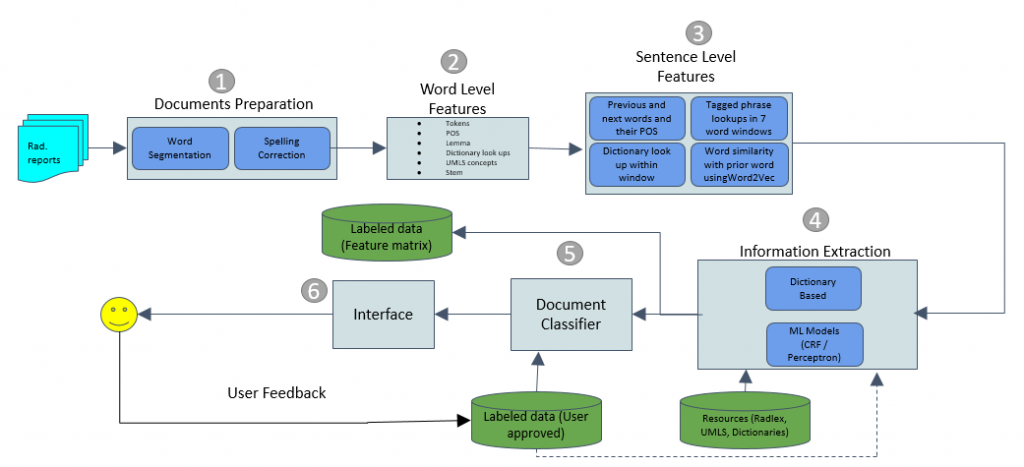Radiology reports are one of the most important medical documents that a diagnostician looks into, especially in the emergency situations. They usually provide the emergency physicians with critical information regarding the condition of the patient and helps the physicians to take immediate action on urgent action conditions. However, the reports are usually complex and are mostly semi- structured or unstructured in nature. In the case of long reports including complex medical conditions, the physicians can overlook some of the medical conditions which may lead to medical miss-diagnosis. Based on several factors such as age, sex and previous medical history of the patient, the same kind of medical conditions can have varying levels of urgency which makes the report more difficult to understand. Furthermore, a single report can be interpreted by each doctor in different ways. In addition, since the medical report is in the free text format, the report is mostly discarded after the diagnosis and is not used for further information extraction.
We developed a machine learning system to help radiologists to efficiently find the clinical significant parts and their level of importance in radiology reports. The system also classifies the report into critical or none critical classes which help radiologists in identifying potential high priority reports out of several hundred reports. As a starting point, the system uses Chest X-RAY reports of adults (de-identified) and provides the doctors with 3 levels of medical phrases namely High critical conditions, Critical conditions and Non- critical conditions. The system does not provide any action/ advice on the further steps for the medical condition. Furthermore, the system is designed to behave based on the viewpoint of the emergency physician. The system is more concerned with identifying medical conditions which need immediate attention from an emergency physician as opposed to all medical conditions associated with a patient.
Our model uses Conditional Random Field to identify clinical significant phrases with an average F1-score of 75.5% in 10 fold validation. The CRF Model is used as a filter with the web interface which highlights the medical phrases and their critical level on the fly to the emergency physician. The overall classification of the report is identified using Linear SVC and features used are phrases extracted from the CRF model which provides an average accuracy of 85% across 10 fold cross validation.

